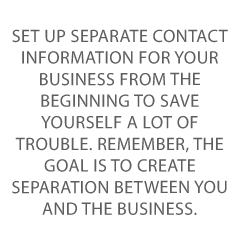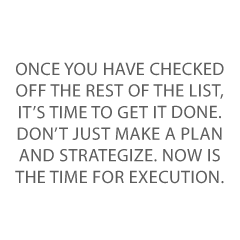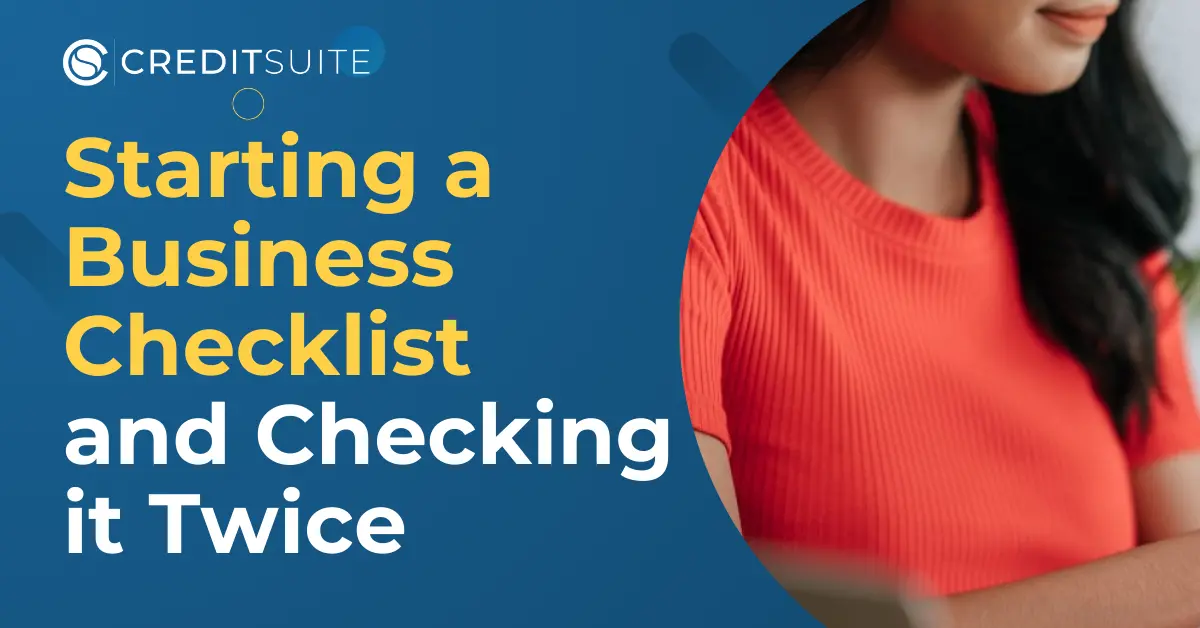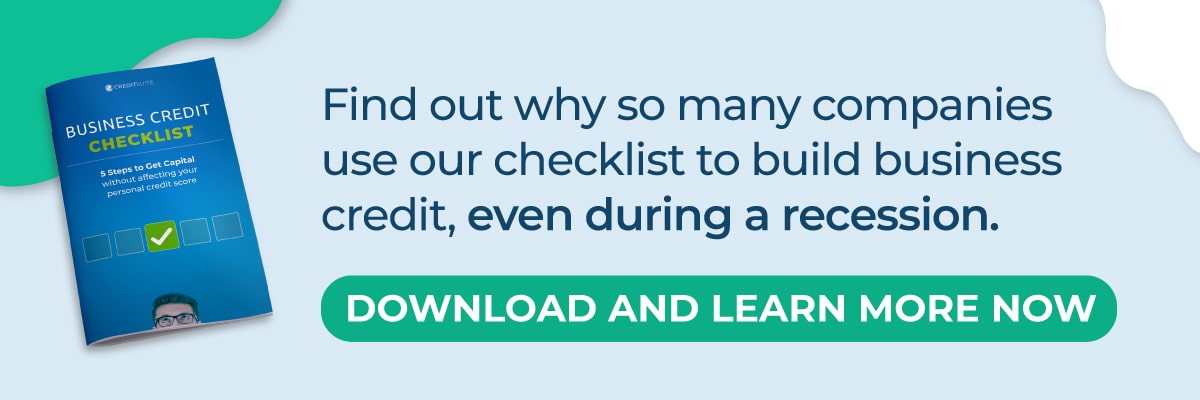Starting a small business is a big deal. There is a lot that goes into it, and if you aren’t careful, something will get missed. That’s why having a business startup checklist when you start a business is so important. Here are some tips for your starting a business checklist.
You have to be sure you set your small business up for success from the get-go. Doing so will allow you to grow at the best pace possible and serve your customers well.
That’s because it will set you up to get the funding you need throughout the process from startup to growth and beyond.
Business Startup Checklist
What should be on your list? A lot of things. This is a good start. And by the way, this also functions as a business credit checklist, too!
Business Name
Of course, you know you have to pick a name for your small business. But, it’s not as simple as it may seem. There are a number of factors you need to consider as you begin this process. For example, does the name help build separate from you as an individual?
If your name is John Doe and you name your business John Doe, Inc., there will be less separation between you and your business. Separation is a key element in building a Fundability Foundation™, as it is vital to building business credit, or credit in the name of your business, not you the owner.
Another thing to remember when naming your business is to stay away from names that may indicate risk. Some businesses are seen as inherently riskier than others. When you start to look for financing, that can cause problems.
Using the John Doe example, John Doe Gun Sales indicates much more risk than simply using John Doe Sales.
Lastly, you have to be certain your name is consistent everywhere. It can’t be Widgets for Less on your license, Widget or Less when you file your business taxes, and Widgets for Less, Inc. on your business loan application.
These seemingly small discrepancies send up fraud red flags for underwriters.
Phone Number and Address
 Set up separate contact information for your business from the beginning to save yourself a lot of trouble. Remember, the goal is to create separation between you and the business.
Set up separate contact information for your business from the beginning to save yourself a lot of trouble. Remember, the goal is to create separation between you and the business.
That means having a separate phone number and address. A toll-free number is great. Get it listed under your business name in the local directories, and as with the name, be sure it’s consistent everywhere.
If you start out using your personal number and then change it, make sure you change it everywhere it is listed. That includes your business tax return and all other paperwork, even that filed with the Secretary of State, not just directories.
You also need a business address. It has to be a physical address where you can receive mail. A PO Box or a UPS box will not work. If you work out of your home and do not want to use your home address, you may choose to use a virtual office address.
That can be a great option, especially since they often offer other services such as receptionist options and meeting rooms. However, note that there are some lenders that do not accept virtual addresses as office addresses.
Get a Federal Employer Identification Number and Incorporate
Now it’s time to do some work with the IRS that doesn’t include taxes. Once you have your business name, phone number, and address, you need to apply for an EIN, or Employer Identification Number.
This is an identifying number for your business that works in a way similar to how your SSN works for you personally.
The application process is pretty simple, and it’s free. Once you have the EIN, you need to incorporate it. This means choosing the legal structure of your business, or the type of business entity you will operate as.
You can incorporate as a Limited Liability Company (LLC), an S corporation, or a Corporation. Operating as a sole proprietor or general partnership business structure doesn’t work well when it comes to business credit and funding.
The choice of the business structure depends on your liability needs and your budget. Get legal advice from your attorney and discuss this with your accountant when you are making this decision.
This step is important because it further builds separation between you and your business. While most credit providers will ask for a Social Security Number in an effort to verify identity, they do not all use it as part of the credit approval process.
When you apply for credit using your EIN, your credit is tied to your business rather than you personally, and if the creditor reports positive payment history, it can help build your business credit score.
Open a Separate, Dedicated Business Bank Account
It is vital to have a separate, dedicated bank account for your business. Set it up under your incorporated name with your EIN and business contact information.
Many credit providers require this as part of their credit approval process, but there is even more to it than that.
First, having a separate bank account helps keep you from mixing up business and personal financial transactions.
They will have to be separated for the Internal Revenue Service when you do your taxes anyway, so starting out with separate accounts only makes things easier.
Then, if you currently or ever plan to accept credit card payments, you will need a merchant account. You cannot get a merchant account without a business bank account.
Finding the best bank account for your specific needs can be hard. The key is to find the one that offers everything you need at the lowest price you can get.
There are a lot of free options, but they are often very limited in the number of transactions and features offered.
If you find one that meets your needs, definitely go for it, but keep in mind that as your business grows, you may need more. Make sure that the account has the ability to grow with you.
There are a lot of great options for bank accounts for a business. One of them is NorthOne. They offer a strong, usable bank account for as low as $10 per month as of the writing of this post.
Business License
Apply for any necessary license or permit your new business will need to operate. That includes all levels, state and local.
Handle all the necessary paperwork with the Secretary of State and be sure everything is in order and consistent.
Then, update as necessary. As you start to apply for financing, the information on your application will be verified against the information on file with the Secretary of State.
Business Website and Email Address
There was a time when this was optional, or at the very least it could be handled as an afterthought. That time is no more. If you want a business that credit providers will take seriously, you need a strong business website.
Go ahead and pay for hosting. Don’t use a free service. If you need help designing, get it. A poorly put-together website is just as bad if not worse than no website.
It’s also important to have a business email address with the same URL as your website.
Why do your website and email address matter? In the long term, as you apply for more and more funding, lenders are very likely to search for your business online.
If they do not see a website or see a website that is unprofessional, it could make them question whether they want to lend to you.
Even if your business is completely legit and profitable, any appearance otherwise can throw a kink in the works when it comes to approval for funding.
Put Together a Business Plan
If you cannot hire a professional business plan writer when starting a new business, you may find some help at a local small business development center. The Small Business Administration also has some resources that may be helpful.
A well-put-together, complete business plan generally includes the following basics.
An Executive Summary
This is a complete summary of the business idea.
Description
The description goes into further detail than the summary, describing the business. What type of business is it? What product or service will it offer?
This is where you work to get others excited about your business. Note that this is important even if your business is already operating.
It will just be in the present rather than the future tense.
Market Analysis
This actually includes two parts. All that market research you did goes here.
Analysis of Audience
What need will your business fill, and for who? Are you a childcare facility filling a need for affordable child care for working moms?
Are you an eatery filling a need for a lunch spot for those working downtown? How will your business fill the need? All of that information goes in this section.
Competitive Analysis
Is there already a business working to fill this need? Is there room for more? How do you plan to compete with them?
If you are not a new business, this will be a market analysis that supports your need for funding, or that shows your business is strong and growing.
Plan for Operation and Management
Who will own or does own the business and who will run or currently runs it from day to day?
Financial Information
This section includes current financials, projections, and a budget plan for the loan funds you are applying for.
Consider Outsourcing vs. In-House for Certain Needs
While it may seem easier to keep everything in-house, some tasks lend themselves greatly to outsourcing.
This can save time and money in a number of circumstances and ways.
As a small business owner, you will need to decide which services to keep in-house and which ones to outsource.
Janitorial Services
Depending on the situation, this can actually be a lifesaver. Bringing in professionals to clean during off hours keeps your customers and clients from having to see the cleaning happen, but allows them to enjoy a clean space.
It also keeps you from paying an employee for a job that they likely did not sign up for and may not do as well as a professional.
Professionals can often do the job better and in less time than you or an employee can.
Not only that, but their professional supplies and tools will be included in what you pay them and split among all their clients. This reduces what you keep in stock.
Accounting and Bookkeeping
Accounting and bookkeeping services can be expensive. However, mistakes in this area can be much more costly. Outsourcing or automating accounting tasks, if your business heavily relies on these processes, can save you a lot of hassle in the long term.
Hiring someone in-house who knows what they are doing in relation to sales tax, payroll, and more can be expensive. Especially when you figure in the cost of accounting software.
Build a Funding Strategy
This is something a lot of business owners do not even consider as part of starting a business, even when it comes to writing a business plan.
It typically comes much later. However, adding this to your startup checklist and executing it will give you a leg up.
Think about not only how you fund your business, but also how you will manage the cash. For example, you know you need to build business credit.
Consider applying for accounts with starter vendors, using those whenever you can, and using your cash to pay them.
A true starter vendor will extend net 30 terms to a business that doesn’t already have good credit.
Then, they will report payments to the business credit reporting agencies. This helps you manage cash flow and build a business credit score at the same time.
Consider also how you will prepare for growth as needed. Building business credit is a great start. Securing a business line of credit as you become eligible is also a good idea. Do not wait until you need it.
Location and Business Insurance
There is so much to consider when checking this one off your list. If you are going to be working out of your home, you need to think about using your home address vs. using a virtual address. If you are looking for a brick-and-mortar location, there is even more to consider.
Choosing a location can be overwhelming for sure. But, it can be even more overwhelming to move an established business.
So, ensuring you consider these things on the front end is smart. Remember to keep a growth mindset, noting if you have room to grow physically.
For example, can you add on, fit more tables, or otherwise expand if needed? Just because it works now doesn’t mean it will work in the future.
This is also a time to consider business insurance costs, as your location can definitely make a difference in your premium.
Consider a Soft Start
Depending on the type of business you are running, consider scheduling a soft opening. This will allow you to pinpoint any kinks without expectations being too high from the potential customers you bring in.
This works well for dining and retail, but not so well for some other types of businesses. Keep that in mind. But if you are able to do so, you could glean a lot of helpful information that will make your official opening even better.
For example, you may see that you need to change some menu options, order more or less of something, schedule different hours, or maybe you need to add an employee or two.
Be sure to market your soft opening well, and make sure you make it clear that is what it is. That will help set the appropriate expectation for your clientele. They’ll realize you aren’t fully up and going yet. Rather, you are simply offering a taste of what is to come.
Give those who come a way to express their thoughts. Suggestion cards or a survey are a great way to do this. It allows them to feel like they are making a difference, and you may get some good ideas.
Execute the Plan
Once you have checked off the rest of the list, it’s time to get it done. Don’t just make a plan and strategize. Now is the time for execution. Enact the plan you have in place. Trust the process. Use the framework you have put in place to build your business into all you have imagined. 
If you have set your business up properly, including choosing a legal entity, you should be able to access business credit from starter vendors.
That funding can help you slingshot your business credit score to the point that you can get approval or more funding with better terms.
This only allows for more growth and expansion, which is the key to longevity in any business.
Credit Suite can help you set your business up the right way. We can also help you find the right funding for your needs every step of the way.
This may include the Credit Line Hybrid, regular small business loans, or some other type of funding. Give us a call now and talk to our advisors about a free Business Finance Assessment to get started!


